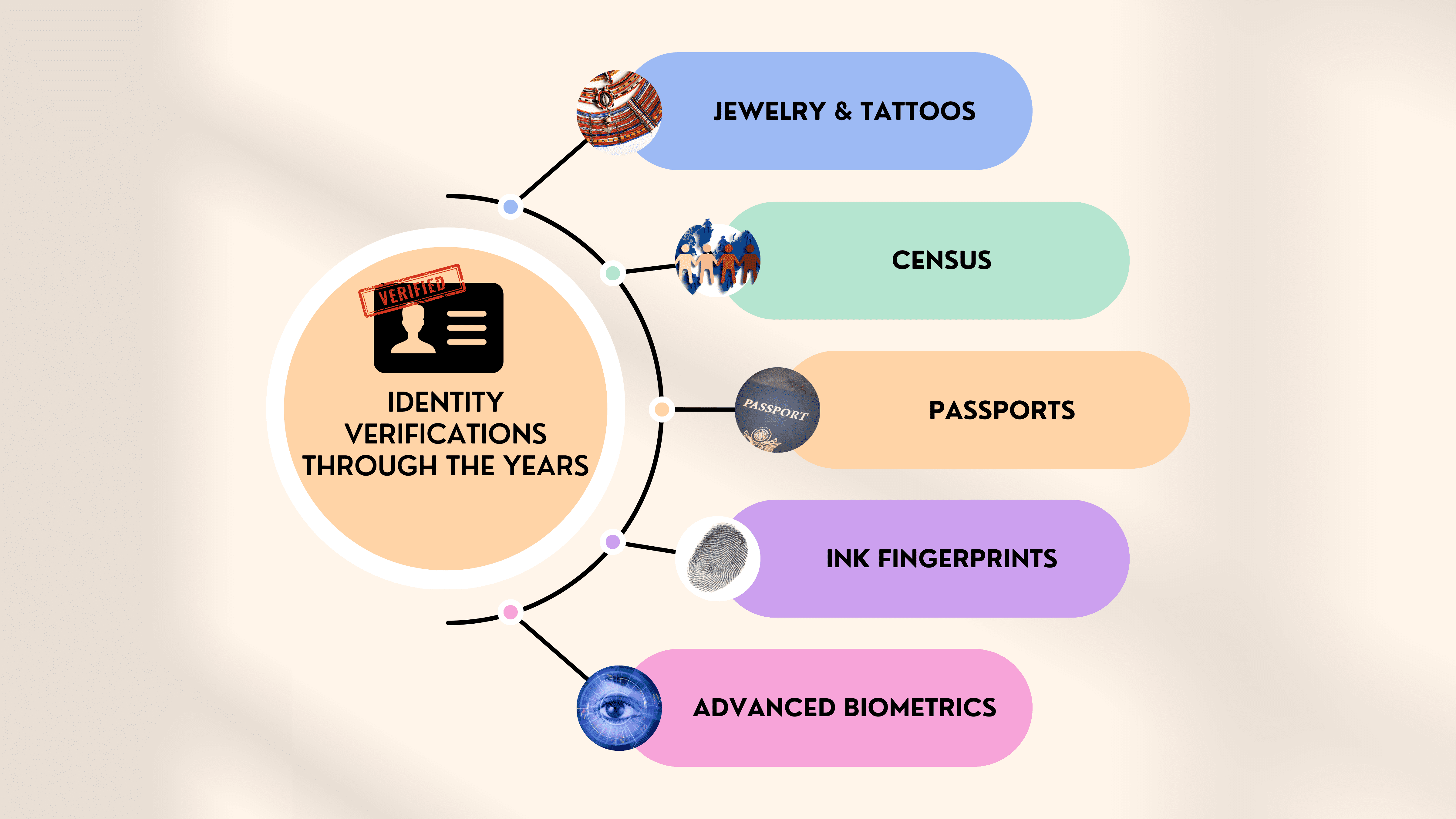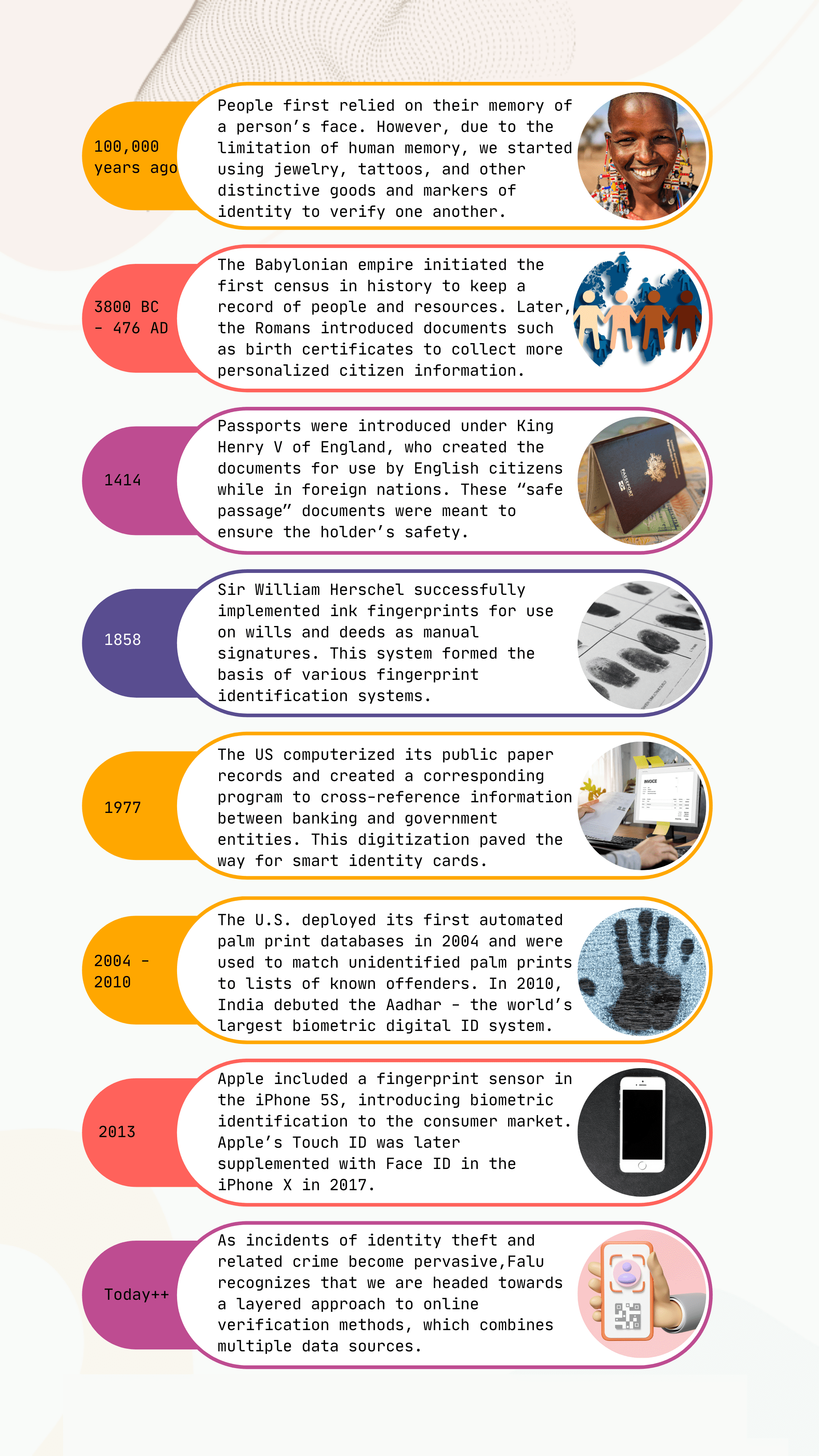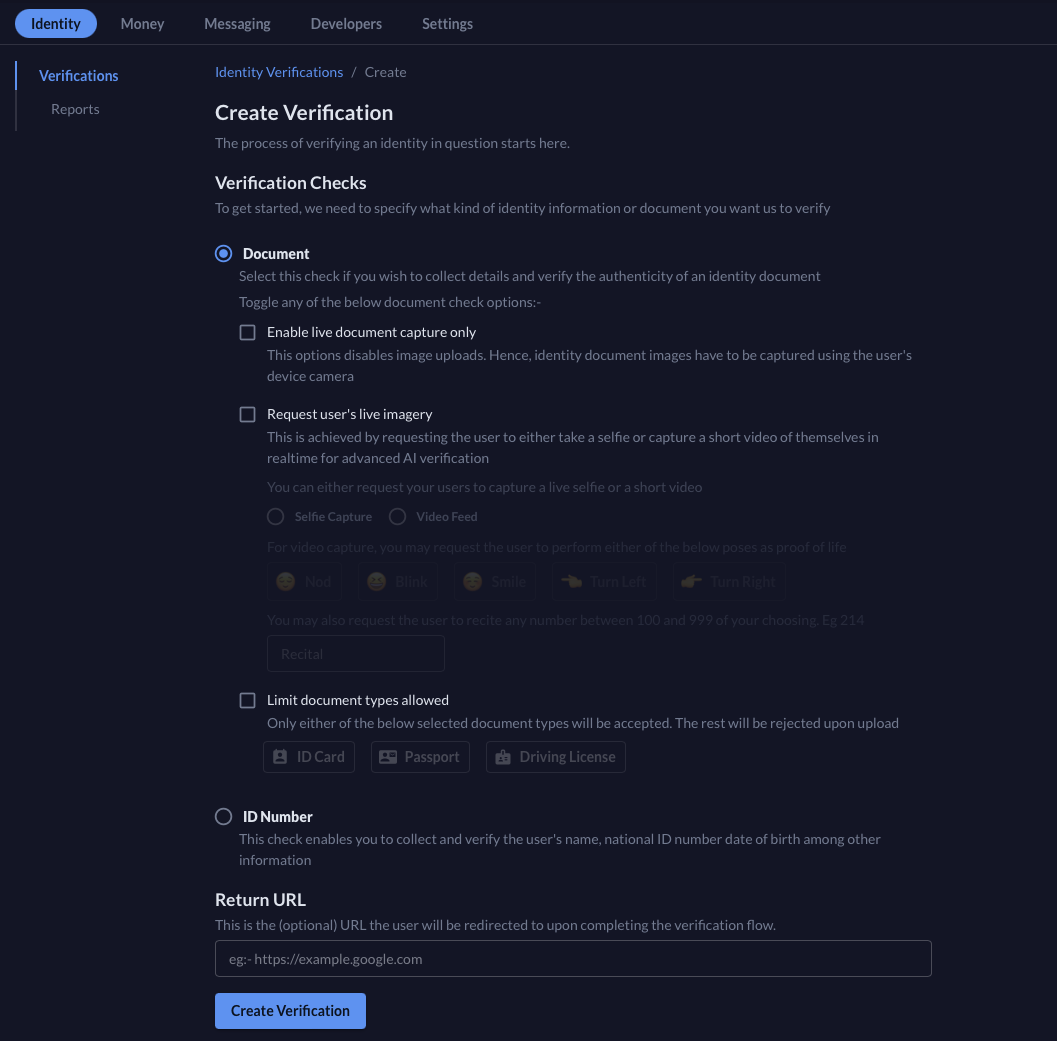Identity verifications through the years - A short history

What is your identity and why does it matter? According to Kanwar et al., an identity is a set of one or more attributes that allows an entity or person to be sufficiently distinguished or uniquely identified. Every individual has an identity, whose elements uniquely identify them. Some of the characteristics of identity are inherited at birth, including attributes such as height, eye color, or sibling relationships that are either physical identifiers or familial links. Other elements, such as government-issued primary keys (your national ID number and its serial number), home addresses, and education history, are acquired over time and are circumstantially assigned.
The accumulation of personal identifiers and the associated identity has evolved to become an essential requirement in modern society. An identity serves a dual purpose: it safeguards an individual, enabling them to claim and assert diverse benefits through ownership and rights, and it, simultaneously, safeguards both the individuals and organizations with which they engage by ensuring and fostering accountability, traceability, and trust.
When a person identifies themselves, they are claiming their identity. However, incidents of identity theft and related crimes have pervaded human history and, as a consequence, these claims on their own do not authenticate identity. Instead, people have been required to present various documents and artifacts to demonstrate that they are, indeed, who they say they are.
Identity verification through the years
Identity verification methods have evolved over the years, from simply memorizing the faces of people to utilizing automated solutions.

Methods of identity verification
Today, identity verification is a necessary and legitimate pre-step that enables individuals to claim their right to live and work in a region and access essential services such as banking. Various methods of verification are in use, with the most common being database, document, biometric, and no-document methods.
Database verification
This method involves comparing identity information provided by an individual against multiple databases that contain data about the said person. For instance, the Kenya government maintains the Integrated Population Registration System (IPRS) from which identity verification providers can match a user’s national ID number and its serial number.
Document-based verification
In this type of verification, a user uploads a document whose authenticity and validity are checked to verify the identity of the individual. Common types of documents utilized in this method include passports, driving licenses, and national identity cards.
No-document verification
This method eliminates the need for users to upload documents. Instead, an individual’s data, such as their name, date of birth, address, and sometimes national ID numbers, are matched against trusted comprehensive data sources. While this method is a convenient and fast way of verifying identities, it is important to incorporate additional security features such as biometric elements to further enhance the reliability of document-free verification.
Biometric verification
This method surpasses the other verification methods by scrutinizing unique biometric data such as fingerprints or facial features. For example, Falu Identity requires a user to upload or take a live selfie or video, which is then analyzed and compared against their identity documents to establish similarity.
Which method does Falu Identity use?
At Falu, we believe that there is no one-size-fits-all approach to identity verification. As such, Falu Identity implements all the methods described above and we encourage our customers to adopt the best technique depending on their use-case. For example, as shown in the image below, you can select whether you want to verify a document only (document-based verification) or document plus live imagery (document and biometric verification) or run an ID number check (no-document verification) while creating a verification flow. When you share this verification session with your user, they only send you what you need to authenticate their identity.

Book a consultation with Falu
Today, verifying the identity of a customer should not have you jumping through hoops – your business deserves a simple and convenient way to verify identities after our more than 100,000-year journey. Falu Identity provides a platform through which you can verify identities in real time and using a method that best suits their needs.
Want to learn more about our platform and how we can help you verify your customer’s identities? Book a consultation with us today!